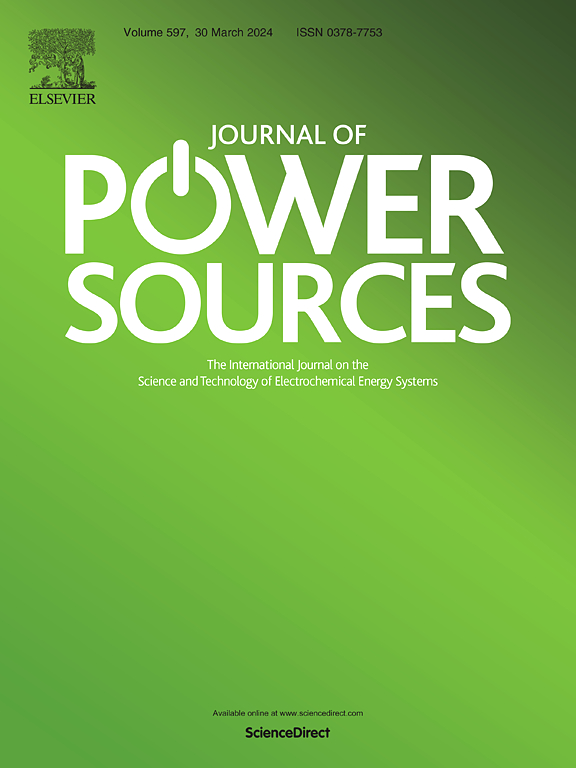Ionic liquids based polymer electrolytes for supercapacitor applications
IF 8.1
2区 工程技术
Q1 CHEMISTRY, PHYSICAL
引用次数: 0
Abstract
The rising demand for inexpensive and sustainable energy storage solutions has catalized substantial research into advanced materials for supercapacitors (SCs). Ionic liquid-based polymer electrolytes (ILPEs) have emerged as potential alternatives owing to their elevated ionic conductivity, extensive electrochemical stability windows, and superior thermal stability. This review paper focuses on advancements in ILPEs for SC applications, emphasizing the interaction between ionic liquids (ILs) and polymer matrices to enhance electrochemical performance. ILs exhibit notable characteristics, such as a wide voltage range exceeding 3V, ionic conductivity greater than 10 mS cm−1, and low volatility. These attributes enhance energy densities (up to 40 Wh/kg) and power densities, in addition to providing improved thermal and mechanical stability. Data indicate that ILPEs can attain specific capacitances within the 100–300 F/g range, exhibiting stable cycling performance and minimal capacitance degradation, which are essential factors for the SC mechanism. Various approaches for incorporating ILs into polymer electrolytes (PEs), including composite materials and gel-type systems, are explored. The review identifies significant challenges such as scalability and costs, noting that the high viscosity and limited ionic conductivity of ILs initially created obstacles. It also proposes optimization strategies for future SC developments.
基于离子液体的聚合物电解质在超级电容器中的应用
对廉价且可持续的储能解决方案的需求不断增长,催化了对超级电容器(SC)先进材料的大量研究。离子液体基聚合物电解质(ILPE)因其较高的离子电导率、广泛的电化学稳定性窗口和优异的热稳定性,已成为潜在的替代材料。本综述论文重点介绍了离子液体基聚合物电解质在 SC 应用方面的进展,强调离子液体 (IL) 与聚合物基质之间的相互作用可提高电化学性能。离子液体具有显著的特性,例如电压范围超过 3V、离子电导率大于 10 mS cm-1、挥发性低。这些特性提高了能量密度(高达 40 Wh/kg)和功率密度,此外还改善了热稳定性和机械稳定性。数据表明,ILPE 的比电容在 100-300 F/g 范围内,具有稳定的循环性能和最小的电容衰减,这些都是 SC 机制的基本要素。综述探讨了将 IL 纳入聚合物电解质(PE)的各种方法,包括复合材料和凝胶型系统。综述指出了可扩展性和成本等重大挑战,并指出 IL 的高粘度和有限的离子传导性最初造成了障碍。报告还提出了未来 SC 开发的优化策略。
本文章由计算机程序翻译,如有差异,请以英文原文为准。
求助全文
约1分钟内获得全文
求助全文
来源期刊

Journal of Power Sources
工程技术-电化学
CiteScore
16.40
自引率
6.50%
发文量
1249
审稿时长
36 days
期刊介绍:
The Journal of Power Sources is a publication catering to researchers and technologists interested in various aspects of the science, technology, and applications of electrochemical power sources. It covers original research and reviews on primary and secondary batteries, fuel cells, supercapacitors, and photo-electrochemical cells.
Topics considered include the research, development and applications of nanomaterials and novel componentry for these devices. Examples of applications of these electrochemical power sources include:
• Portable electronics
• Electric and Hybrid Electric Vehicles
• Uninterruptible Power Supply (UPS) systems
• Storage of renewable energy
• Satellites and deep space probes
• Boats and ships, drones and aircrafts
• Wearable energy storage systems
 求助内容:
求助内容: 应助结果提醒方式:
应助结果提醒方式:


